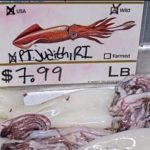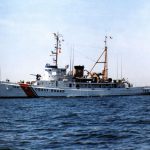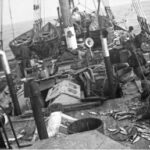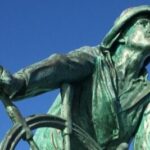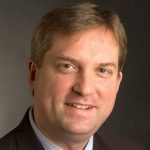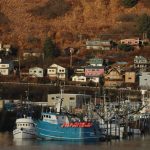Daily Archives: February 3, 2017
Coast Guard assists fishing vessel taking on water near Fairweather Ground, Alaska
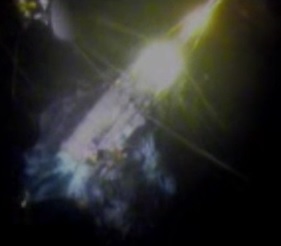 A Coast Guard aircrew assisted a fishing vessel taking on water with four people aboard in the vicinity of Fairweather Ground approximately 49 miles southeast of Lituya Bay Friday morning. The 53-foot fishing vessel Pacific Star received assistance from Coast Guard aircrews and the good Samaritan vessel Sherrie Marie before getting back underway to Sitka. Watchstanders at Coast Guard Sector Juneau received a report that the 53-foot Pacific Star began taking on water after 9 p.m. Thursday. The captain of the Pacific Star reported taking on water through a hatch on the aft part of the vessel. All donned survival suits and proceeded toward Lituya Bay. Sector Juneau issued an Urgent Marine Information Bulletin and launched two aircrews to assist, one Air Station Sitka MH-60 Jayhawk crew and one HC-130 Air Station Kodiak crew. The tug Bering Titan was about 19 miles south of the Pacific Star’s position and escorted the vessel in case the situation deteriorated. At approximately 10 p.m. Thursday, while on scene, an Air Station Sitka MH-60 Jayhawk crew lowered a dewatering pump to the Pacific Star. The captain reported that pumps were keeping up with the flooding and decided to continue sailing closer to shore. An HC-130 aircrew from Coast Guard Air Station Kodiak remained overhead and maintained communications with the Pacific Star while the Jayhawk aircrew refueled in Yakutat. At 8 a.m. the Pacific Star safely made its transit to Graves Harbor, where the vessel could dewater and make repairs after determining that the vessel was taking on water through a leaky hatch. The fishing vessel Sherrie Marie was anchored nearby in Graves Harbor and also provided assistance to the vessel. Video 20:42
A Coast Guard aircrew assisted a fishing vessel taking on water with four people aboard in the vicinity of Fairweather Ground approximately 49 miles southeast of Lituya Bay Friday morning. The 53-foot fishing vessel Pacific Star received assistance from Coast Guard aircrews and the good Samaritan vessel Sherrie Marie before getting back underway to Sitka. Watchstanders at Coast Guard Sector Juneau received a report that the 53-foot Pacific Star began taking on water after 9 p.m. Thursday. The captain of the Pacific Star reported taking on water through a hatch on the aft part of the vessel. All donned survival suits and proceeded toward Lituya Bay. Sector Juneau issued an Urgent Marine Information Bulletin and launched two aircrews to assist, one Air Station Sitka MH-60 Jayhawk crew and one HC-130 Air Station Kodiak crew. The tug Bering Titan was about 19 miles south of the Pacific Star’s position and escorted the vessel in case the situation deteriorated. At approximately 10 p.m. Thursday, while on scene, an Air Station Sitka MH-60 Jayhawk crew lowered a dewatering pump to the Pacific Star. The captain reported that pumps were keeping up with the flooding and decided to continue sailing closer to shore. An HC-130 aircrew from Coast Guard Air Station Kodiak remained overhead and maintained communications with the Pacific Star while the Jayhawk aircrew refueled in Yakutat. At 8 a.m. the Pacific Star safely made its transit to Graves Harbor, where the vessel could dewater and make repairs after determining that the vessel was taking on water through a leaky hatch. The fishing vessel Sherrie Marie was anchored nearby in Graves Harbor and also provided assistance to the vessel. Video 20:42
At NOAA – Trump team may emphasize climate science uncertainty
 The uncertainty surrounding climate research could be emphasized at the National Oceanic and Atmospheric Administration under the Trump Administration. The Trump Administration landing team at NOAA may focus on data used by the agency to formulate its climate research, calling into question the accuracy of temperature measurements that inform the public’s understanding of global warming, according to an official involved in preliminary talks. In particular, the team has discussed the ways that the instrumentation used in some NOAA temperature readings could be flawed and has raised the possibility of including a section on the NOAA online home page that would emphasize uncertainty.,, Sterling Burnett, a research fellow at the Heartland Institute, argued that the administration is not interested in stifling climate science so much as shifting research to other fields like short-term weather predictions and maintaining the health of commercial fishing stocks. He said scientists are going to have to get used to the idea of facing more scrutiny, particularly if they want to receive federal research grants, and predicted cuts to those grants as money is shifted to other fields he called more relevant to the economy. Read the article here 20:05
The uncertainty surrounding climate research could be emphasized at the National Oceanic and Atmospheric Administration under the Trump Administration. The Trump Administration landing team at NOAA may focus on data used by the agency to formulate its climate research, calling into question the accuracy of temperature measurements that inform the public’s understanding of global warming, according to an official involved in preliminary talks. In particular, the team has discussed the ways that the instrumentation used in some NOAA temperature readings could be flawed and has raised the possibility of including a section on the NOAA online home page that would emphasize uncertainty.,, Sterling Burnett, a research fellow at the Heartland Institute, argued that the administration is not interested in stifling climate science so much as shifting research to other fields like short-term weather predictions and maintaining the health of commercial fishing stocks. He said scientists are going to have to get used to the idea of facing more scrutiny, particularly if they want to receive federal research grants, and predicted cuts to those grants as money is shifted to other fields he called more relevant to the economy. Read the article here 20:05
White shrimp weighing in at 10-12 count per pound? In late January?
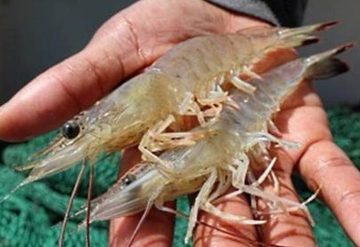 That is exactly how the 2016-17 commercial shrimping season in South Carolina state waters wound up earlier this week, at the end of January. The season typically closes by mid-January but excellent catches of jumbo shrimp by trawlers kept it open later. “I’ve had people tell me they’ve never seen big shrimp like this out there this time of year,” Mel Bell, Director of the Office of Fisheries Management for the South Carolina Department of Natural Resources, said on Thursday. “It’s been an unusual close to the season. It’s normally closed by mid-January, and if it’s a colder winter, maybe earlier. “We’ve never seen that phenomenon of those large shrimp offshore. I’ve talked to fishermen who have been in the industry for decades and they’ve never seen anything like that.” Read the story here 18:07
That is exactly how the 2016-17 commercial shrimping season in South Carolina state waters wound up earlier this week, at the end of January. The season typically closes by mid-January but excellent catches of jumbo shrimp by trawlers kept it open later. “I’ve had people tell me they’ve never seen big shrimp like this out there this time of year,” Mel Bell, Director of the Office of Fisheries Management for the South Carolina Department of Natural Resources, said on Thursday. “It’s been an unusual close to the season. It’s normally closed by mid-January, and if it’s a colder winter, maybe earlier. “We’ve never seen that phenomenon of those large shrimp offshore. I’ve talked to fishermen who have been in the industry for decades and they’ve never seen anything like that.” Read the story here 18:07
National Fisheries Institute bristles at comments by Canada’s fisheries minister
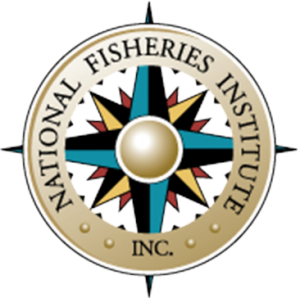 An American seafood industry association is disputing statements by Canada’s fisheries minister that Canadian producers need to “raise their game” in order to meet new traceability rules for seafood imported into the U.S. The Washington-based National Fisheries Institute, which opposes the new rules, says Canada has nothing to do with the illegal, unreported and unregulated (IUU) catches the new Seafood Import Monitoring Program was brought in to stop. The institute was reacting to a CBC News report where federal Fisheries Minister Dominic LeBlanc called increased traceability “very laudable,” even if Canada was not the target. He said Canada has been working with the U.S. government for months on this issue. “We need to raise our game to ensure that the Americans receive the evidence they require that our fisheries are compliant, as they are,” LeBlanc said. That statement put LeBlanc offside with the National Fisheries Institute, which is part a powerhouse lawsuit launched last month to block the Seafood Import Monitoring Program brought in by the former Obama administration in December. Read the story here 15:00
An American seafood industry association is disputing statements by Canada’s fisheries minister that Canadian producers need to “raise their game” in order to meet new traceability rules for seafood imported into the U.S. The Washington-based National Fisheries Institute, which opposes the new rules, says Canada has nothing to do with the illegal, unreported and unregulated (IUU) catches the new Seafood Import Monitoring Program was brought in to stop. The institute was reacting to a CBC News report where federal Fisheries Minister Dominic LeBlanc called increased traceability “very laudable,” even if Canada was not the target. He said Canada has been working with the U.S. government for months on this issue. “We need to raise our game to ensure that the Americans receive the evidence they require that our fisheries are compliant, as they are,” LeBlanc said. That statement put LeBlanc offside with the National Fisheries Institute, which is part a powerhouse lawsuit launched last month to block the Seafood Import Monitoring Program brought in by the former Obama administration in December. Read the story here 15:00
Australian shark fin export sales showing signs of recovery
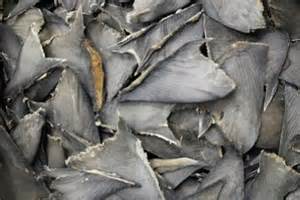 A West Australian seafood exporter says sales of shark fins are finally starting to pick up again, after a strong push from environmental groups to ban the global shark fin trade hit the industry hard. The long-standing calls from environmental groups stem from a concern of the sustainability of shark stocks and the prevalence of illegal finning. But fish processor Adam Soumelidis, who runs Great Southern Seafoods in Albany on the south-coast of Western Australia, said Australia had been unfairly dragged down in the bad press on shark fishing. He said while it was a relief that sales were recovering, industry needed to lobby more to make sure fin sales stayed afloat. “Now we’re just slowly, slowly starting to filter in through into the market.” Mr Soumelidis attributed the gradual increase to a better understanding of Australian fishing regulations. “Our practices aren’t like the rest of the world. We don’t fin the sharks and throw them back in,” he said. “Our practices are the whole fish comes in and it gets used. Read the story here 14:36
A West Australian seafood exporter says sales of shark fins are finally starting to pick up again, after a strong push from environmental groups to ban the global shark fin trade hit the industry hard. The long-standing calls from environmental groups stem from a concern of the sustainability of shark stocks and the prevalence of illegal finning. But fish processor Adam Soumelidis, who runs Great Southern Seafoods in Albany on the south-coast of Western Australia, said Australia had been unfairly dragged down in the bad press on shark fishing. He said while it was a relief that sales were recovering, industry needed to lobby more to make sure fin sales stayed afloat. “Now we’re just slowly, slowly starting to filter in through into the market.” Mr Soumelidis attributed the gradual increase to a better understanding of Australian fishing regulations. “Our practices aren’t like the rest of the world. We don’t fin the sharks and throw them back in,” he said. “Our practices are the whole fish comes in and it gets used. Read the story here 14:36

REWARD!! Michigan DNR Offers Big Reward For Plan To Block Invasive Fish
If the fishing world had a most-wanted list, Asian carp surely top it. There are plenty of despised invasives plaguing U.S. waters, but how many of them have a $1 million dollar bounty on their heads? That’s what the Michigan Department of Natural Resources just dropped on the table. Show the agency a viable plan for stopping those silver and big head carp from reaching the Great Lakes and you could be eligible for a sweet payday. In case you haven’t already heard the tale, Asian carp are prolific breeders that can reach 50-pounds. The filter-feeding invasives consume massive amounts of the tiny plants (phytoplankton) and animals (zooplankton) that feed native forage species, along with juvenile sport fish such as walleye and yellow perch. Disrupting the food web can wreak havoc on local fisheries. Read the story here with link to DNR 12:21

Fishing industry warns against “trading away” rights in Brexit negotiations
The Scottish Fishermen’s Federation says there must be “no trading away” of UK fishing rights amid the Brexit process. It comes after yesterday’s white paper on leaving the EU was published. It shows in 2015, EU skippers caught over six times more fish in UK waters than British fishermen caught in Europe. The government paper also makes mention of a “mutually beneficial deal” for both parties post-Brexit. Bertie Armstrong, chief executive of the Scottish Fishermen’s Federation, said: “The Scottish Fishermen’s Federation welcomes the Prime Minister’s stated approach to the Brexit negotiations as one of anticipating success. Delivery of the White Paper vision of a world leading food industry is an ambition fully shared by the fishing sector. Read the story here 11:15
Louisiana crabber busted twice with too many young females
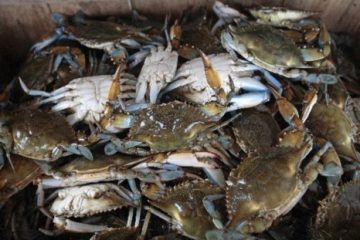 A Violet commercial crabber failed to heed a warning about harvesting immature female crabs , and that resulted in a citation that could put him in jail for up to 60 days, the Louisiana Department of Wildlife and Fisheries reported Thursday. On Jan. 20, enforcement agents say they found Allan Campo, 51, to be in violation of the state’s new crabbing regulations, and issued him a written warning. Less than two weeks later, however, agents were on patrol in Plaquemines Parish’s Shell Lake when they observed Campo actively crabbing, the department said. The agents stopped Campo, and found him to be in possession of two crates of crabs holding an illegal amount of immature female crabs, according to the department. Under new regulations, no more than 2 percent of a commercial crabber’s take may be immature females. Read the story here 10:48
A Violet commercial crabber failed to heed a warning about harvesting immature female crabs , and that resulted in a citation that could put him in jail for up to 60 days, the Louisiana Department of Wildlife and Fisheries reported Thursday. On Jan. 20, enforcement agents say they found Allan Campo, 51, to be in violation of the state’s new crabbing regulations, and issued him a written warning. Less than two weeks later, however, agents were on patrol in Plaquemines Parish’s Shell Lake when they observed Campo actively crabbing, the department said. The agents stopped Campo, and found him to be in possession of two crates of crabs holding an illegal amount of immature female crabs, according to the department. Under new regulations, no more than 2 percent of a commercial crabber’s take may be immature females. Read the story here 10:48
Alaskans should have the final say on Pebble Mine – Sharon and Everett Thompson of Naknek, Alaska,
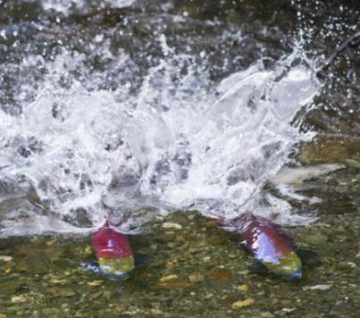 Pebble Mine’s Canadian, would-be developers are ecstatically peddling a story that their mine’s approval is certain. A new Trump Administration, “desires to see Pebble permitted,” Northern Dynasty’s chief executive said Monday. Because of this, investors are piling on, sending the Northern Dynasty stock soaring in recent weeks. All of these outsiders have forgotten one thing: the Pebble Mine is proposed in Bristol Bay, Alaska, not the South Lawn of the White House. Bristol Bay supports the world’s largest run of sockeye salmon that sustains local communities, businesses and the regional economy. Alaskans hate the proposal despite “alternative facts” being pushed by Northern Dynasty in recent days claiming local support. Let the record show that 80 percent of Bristol Bay residents have said clearly that they don’t want the mine. Statewide, 65 percent of residents have said “no mine.” Read the op-ed here The notion that the Trump Administration will approve Pebble is shear speculation on the part of Northern Dynasty. Read the story here 09:22
Pebble Mine’s Canadian, would-be developers are ecstatically peddling a story that their mine’s approval is certain. A new Trump Administration, “desires to see Pebble permitted,” Northern Dynasty’s chief executive said Monday. Because of this, investors are piling on, sending the Northern Dynasty stock soaring in recent weeks. All of these outsiders have forgotten one thing: the Pebble Mine is proposed in Bristol Bay, Alaska, not the South Lawn of the White House. Bristol Bay supports the world’s largest run of sockeye salmon that sustains local communities, businesses and the regional economy. Alaskans hate the proposal despite “alternative facts” being pushed by Northern Dynasty in recent days claiming local support. Let the record show that 80 percent of Bristol Bay residents have said clearly that they don’t want the mine. Statewide, 65 percent of residents have said “no mine.” Read the op-ed here The notion that the Trump Administration will approve Pebble is shear speculation on the part of Northern Dynasty. Read the story here 09:22
Our view: Adjust beach replenishment to minimize maritime dead zones
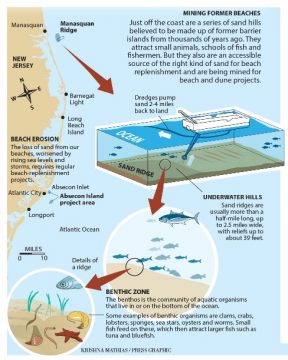 Beach replenishment is an expensive and temporary method of maintaining barrier-island beaches. In the absence of alternatives — and many have been tried in vain — state and local governments and most of society are committed to pumping sand from the ocean floor for the foreseeable future. As the post-Hurricane Sandy rebuilding of all the beaches along New Jersey’s 127-mile Atlantic coast nears completion, an additional potential cost is becoming clear: Replenishment might be creating dead zones on land and at sea. That’s not sufficient reason to stop sand dredging (without a new and better option), but it’s worrisome enough that governments should adjust their practices and possibly even their funding mechanisms. Governments are planning to continue dredging ocean sand onto beaches for at least another half-century, so there is a danger it will create enough dead-zone acreage to adversely affect the richly complex coastal web of life. Recreational and commercial fishers say it already is. Read the op-ed here 08:34
Beach replenishment is an expensive and temporary method of maintaining barrier-island beaches. In the absence of alternatives — and many have been tried in vain — state and local governments and most of society are committed to pumping sand from the ocean floor for the foreseeable future. As the post-Hurricane Sandy rebuilding of all the beaches along New Jersey’s 127-mile Atlantic coast nears completion, an additional potential cost is becoming clear: Replenishment might be creating dead zones on land and at sea. That’s not sufficient reason to stop sand dredging (without a new and better option), but it’s worrisome enough that governments should adjust their practices and possibly even their funding mechanisms. Governments are planning to continue dredging ocean sand onto beaches for at least another half-century, so there is a danger it will create enough dead-zone acreage to adversely affect the richly complex coastal web of life. Recreational and commercial fishers say it already is. Read the op-ed here 08:34
Domoic Acid raises its ugly head again…crab fishing closure
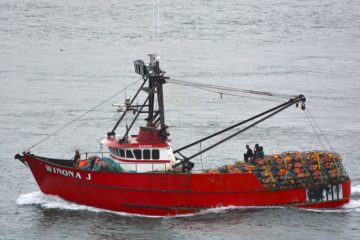 Commercial crabbing closed from Coos Bay north jetty to Heceta Head due to domoic acid The Oregon Department of Agriculture and the Oregon Department of Fish and Wildlife announce the closure of the commercial crab fishery from the north jetty of Coos Bay to Heceta Head, just south of Yachats, due to elevated levels of domoic acid in crab viscera. The area is also closed to recreational harvest. Crab meat remains safe for consumption. Domoic acid levels are elevated only in crab viscera, or the guts, of crab sampled and tested from this area of the Oregon coast. The closure is limited to that portion of the central coast. Areas south of Coos Bay and north of Heceta Head remain open to commercial crabbing. Read the story here 07:38
Commercial crabbing closed from Coos Bay north jetty to Heceta Head due to domoic acid The Oregon Department of Agriculture and the Oregon Department of Fish and Wildlife announce the closure of the commercial crab fishery from the north jetty of Coos Bay to Heceta Head, just south of Yachats, due to elevated levels of domoic acid in crab viscera. The area is also closed to recreational harvest. Crab meat remains safe for consumption. Domoic acid levels are elevated only in crab viscera, or the guts, of crab sampled and tested from this area of the Oregon coast. The closure is limited to that portion of the central coast. Areas south of Coos Bay and north of Heceta Head remain open to commercial crabbing. Read the story here 07:38

































